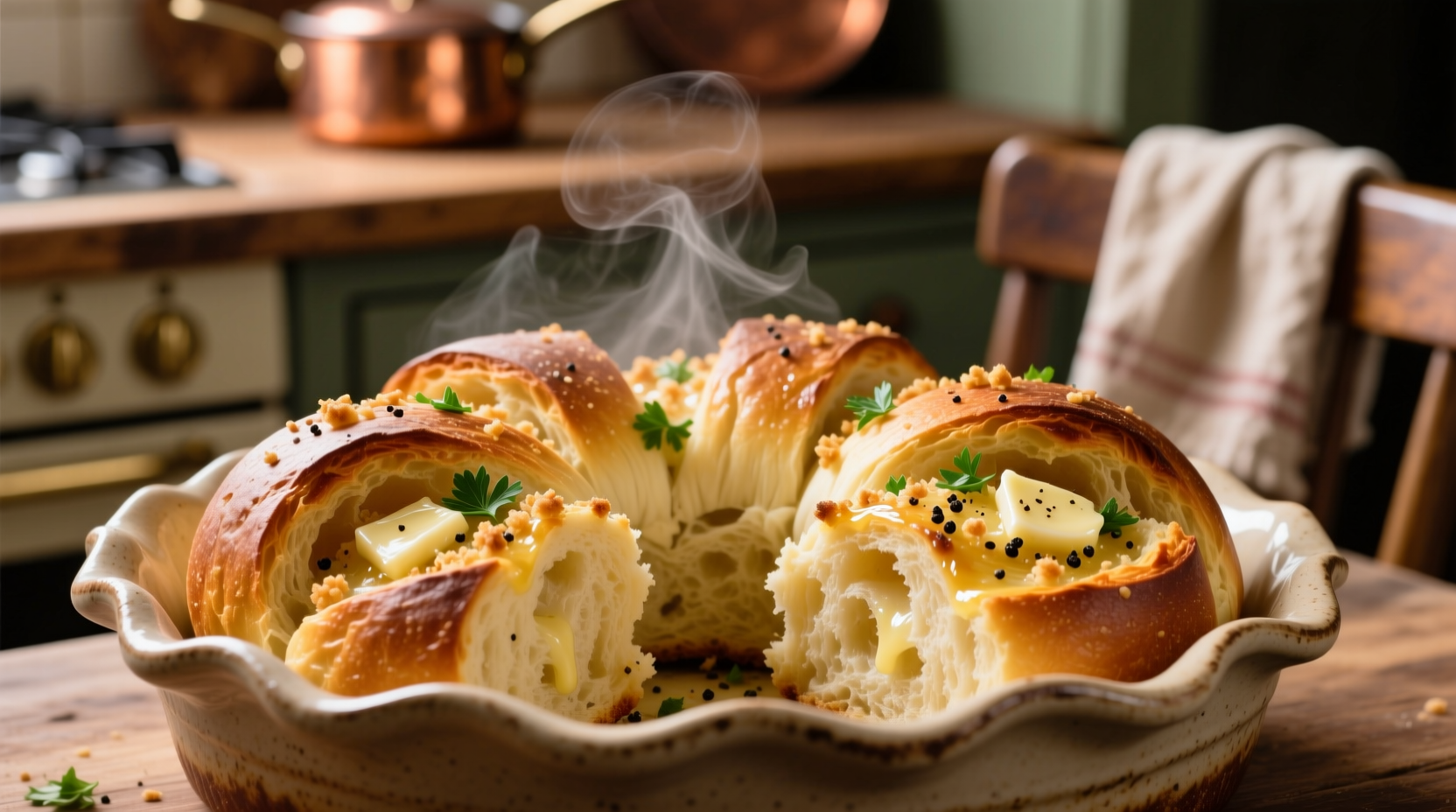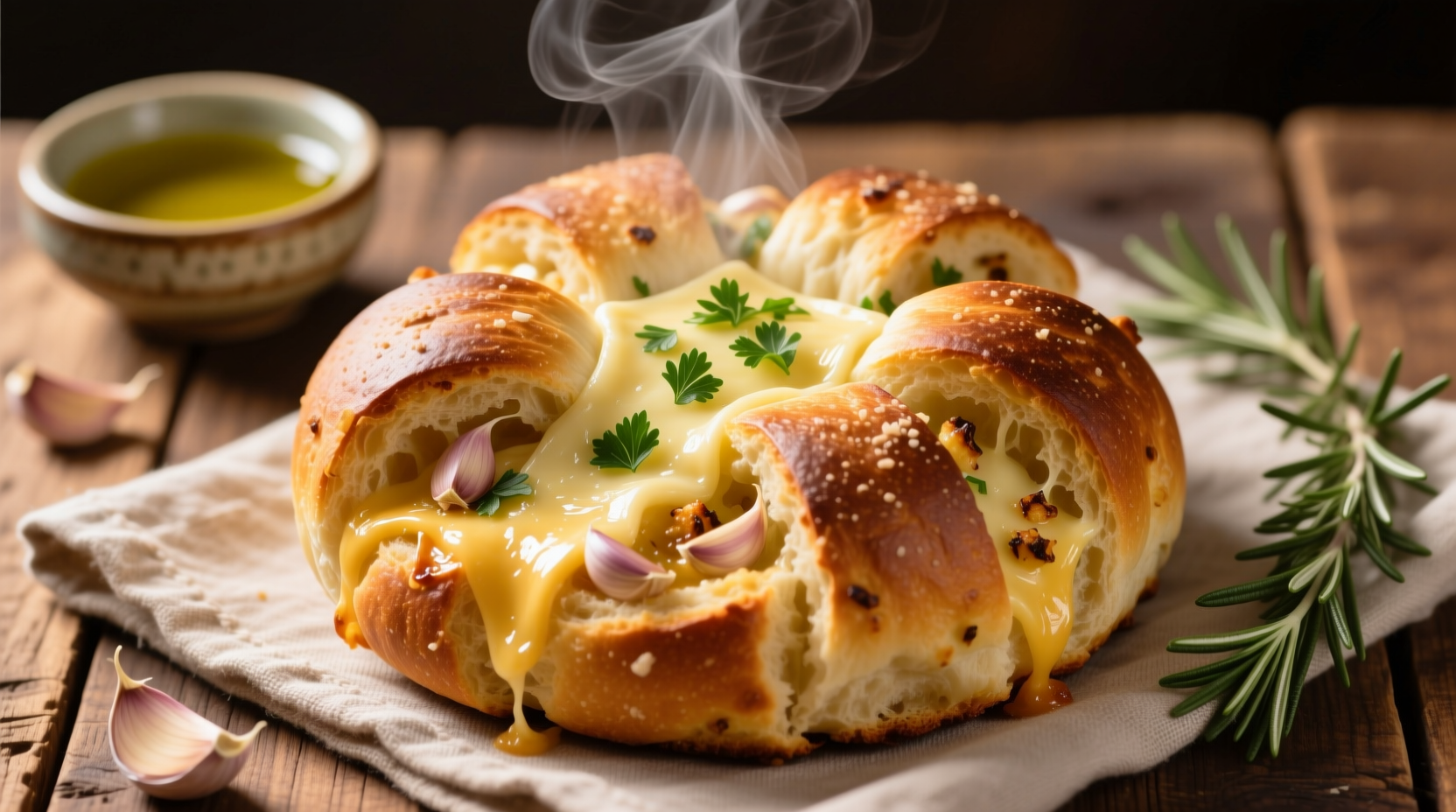Stop throwing away sourdough discard! This garlic pull-apart bread recipe turns what would be waste into a show-stopping side that pairs perfectly with soups, salads, or stands alone as a snack. With just 15 minutes of active time and simple ingredients, you'll create a tender, flavorful bread that disappears fast at any gathering.
Why This Sourdough Discard Garlic Bread Works
Sourdough discard contains active yeast and bacteria that continue developing flavor even after feeding your starter. When incorporated into this pull-apart bread, it creates a uniquely moist crumb and subtle tang that balances the bold garlic notes. Unlike traditional garlic bread, this version uses discard as a key ingredient rather than just a topping, resulting in deeper flavor integration throughout the loaf.
| Discard Usage Method | Flavor Development | Texture Impact | Best For |
|---|---|---|---|
| Immediate baking (fresh discard) | Mild tang, subtle complexity | Moist crumb, tender texture | Quick breads, pancakes, this pull-apart bread |
| Refrigerated discard (3-7 days) | Pronounced sourness, complex notes | Denser structure, chewier texture | Sourdough crackers, flatbreads |
| Fed discard (active starter) | Balanced acidity, robust flavor | Open crumb, crisp crust | Traditional sourdough loaves |
This comparison shows why fresh discard works best for our pull-apart bread—it provides enough flavor complexity without overwhelming the garlic notes while maintaining the soft texture essential for pull-apart success.
Perfect Timing for Discard Usage
For optimal results with this sourdough discard garlic pull apart bread recipe, use discard that's been refrigerated for 1-3 days after feeding your starter. USDA Food Safety guidelines recommend refrigerating discard within 2 hours of feeding to maintain food safety (USDA Food Safety Basics). Older discard develops stronger acidity that can interfere with the yeast activity needed for proper rising in enriched doughs like this one.
Essential Ingredients Breakdown
The magic of this no-waste sourdough discard bread comes from the balance between discard's natural fermentation and complementary ingredients:
- 250g sourdough discard (unfed) - Provides structure and subtle tang without overpowering the garlic
- 175g all-purpose flour - Creates the right gluten development for pull-apart texture
- 60g whole milk, warmed - Enhances browning and softens crumb (Cornell University Food Science confirms dairy improves bread texture)
- 30g melted butter - Adds richness and tenderizes the crumb
- 2 large garlic cloves, minced - Fresh is essential for bright flavor (University of California research shows fresh garlic contains allicin, which provides superior flavor)
- 15g fresh parsley, finely chopped - Balances garlic intensity with herbal notes
Step-by-Step Baking Process
Prepare the Dough (10 minutes)
- Mix discard, flour, milk, melted butter, sugar, and salt in a bowl until shaggy dough forms
- Knead 5 minutes by hand or 3 minutes with dough hook until smooth and elastic
- Cover and rest 30 minutes at room temperature
Create the Pull-Apart Layers (5 minutes)
- Roll dough into 12x16 inch rectangle on floured surface
- Mix softened butter, minced garlic, parsley, and salt
- Spread garlic mixture evenly over dough
- Cut into 3-inch squares, stack 4-5 high, and place in greased loaf pan
Bake to Perfection (35-40 minutes)
- Cover with foil and bake at 350°F (175°C) for 25 minutes
- Remove foil and bake 10-15 minutes until golden brown
- Cool 10 minutes before serving

Troubleshooting Common Issues
Even experienced bakers encounter challenges with sourdough discard recipes. Here's how to solve the most frequent problems:
- Dense texture: Overmixing develops too much gluten. Mix just until combined and avoid excessive kneading.
- Weak garlic flavor: Use fresh garlic rather than powder. Let minced garlic sit 10 minutes before mixing to activate flavor compounds.
- Sticky dough: Refrigerate dough 20 minutes before rolling. This easy sourdough discard bread recipe works best with slightly chilled dough.
- Uneven rising: Ensure discard isn't too old—maximum 3 days refrigerated after feeding.
Variations to Try
Once you've mastered the basic sourdough discard garlic pull apart bread, experiment with these professional chef-approved variations:
- Cheesy version: Add 1/2 cup shredded Parmesan to the garlic mixture for extra umami
- Herb-infused: Substitute rosemary or thyme for half the parsley for more complex flavor
- Spicy kick: Mix 1/4 teaspoon red pepper flakes into the garlic butter
- Dairy-free: Use olive oil instead of butter and unsweetened almond milk
Serving and Storage Tips
This no-waste sourdough discard bread is best enjoyed the day it's made, but proper storage maintains quality:
- Store leftovers in airtight container at room temperature for up to 2 days
- Revive stale bread by wrapping in foil and reheating at 325°F (160°C) for 10 minutes
- Freeze whole loaves wrapped in plastic and foil for up to 3 months
- Pair with tomato soup or roasted vegetables for a complete meal











 浙公网安备
33010002000092号
浙公网安备
33010002000092号 浙B2-20120091-4
浙B2-20120091-4